William Haggard was the pseudonym of Richard Henry Michael Clayton, the son of the Rev. Henry James Clayton and Mabel Sarah Clayton. He was an English writer of fictional spy thrillers set in the 1960s through the 1980s, or, as the writer H. R. F. Keating called them, "action novels of international power." Like C. P. Snow, he was a quintessentially British Establishment figure who had been a civil servant in India, and his books vigorously put forth his perhaps idiosyncratic points of view. The principle character in most of his novels is the urbane Colonel Charles Russell of the fictional Security Executive,, who moves easily and gracefully along Snow's Corridors of Power in Whitehall. During the years of the fictional spy mania initially begun by the James Bond stories, Haggard was considered by most critics to be at the very top of the field.

Natural Causes is a 1953 comedy crime novel by the British writer Henry Cecil. It was his fourth novel. As with most of his work it combines Wodehousian humour with a potentially major crime theme.
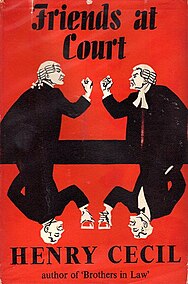
Friends at Court is a 1956 comedy novel by the British writer Henry Cecil. It was published in the United States the following year by Harper Publications. It is a sequel to his bestseller Brothers in Law. Roger Thursby the hero of the original novel is now flourishing in the legal profession and has hopes of soon being made a Queen's Counsel. It was followed in 1962 by a third book in the series Sober as a Judge.
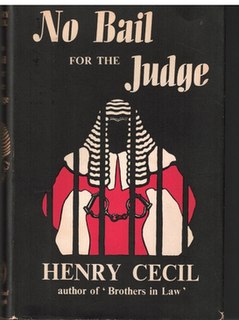
No Bail for the Judge is 1952 comedy crime novel by the British writer Henry Cecil. It was published in America by Harper Publications. It was the second novel of Cecil, himself a judge, and along with Brothers in Law is one of his best known.

The Toff Goes to Market is a 1942 crime thriller novel by the British writer John Creasey. It was the eighth in his long-running featuring the gentleman amateur detective The Toff. It was one of a number of novels produced in the era that featured the booming wartime black market as a major plotline. It has been republished on a number of occasions.
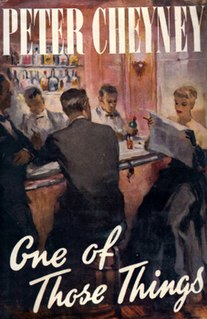
One of Those Things is a 1949 thriller novel by the British writer Peter Cheyney. Although best known for his series featuring Lemmy Caution and Slim Callaghan, this was one of several stand-alone novels he wrote featuring hardboiled private detectives. It was also published under the alternative title Mistress Murder.

Reputation for a Song is a 1952 crime novel by the British writer Edward Grierson. It is an inverted detective story, breaking with many of the traditions of the established Golden Age of Detective Fiction. A young man is placed on trial accused of murdering his father. Its conclusion rests on interpretations of the presumption of innocence.

The Cask is a 1920 detective novel by the Irish-born writer Freeman Wills Crofts. His debut novel, it is considered his masterpiece. Long after the author's reputation had declined, this book was still hailed by critics as a cornerstone of the genre Crofts had been working as a railway engineer before writing the novel, but its success launched him as one of the leading writers of the Golden Age of Detective Fiction. He later went on to create the character of Chief Inspector French who appeared in a long-running series of novels.

The Second Man is a 1956 crime novel by the British writer Edward Grierson. It won the Gold Dagger award of the Crime Writers' Association.

The Massingham Affair is a 1962 crime detective novel by the British writer Edward Grierson. Grierson based on the story on a real-life case that took place in Edlingham. in the late nineteenth century.
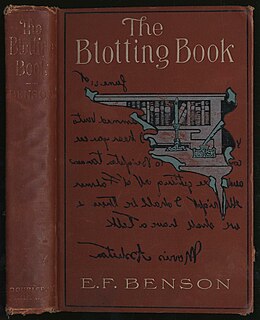
The Blotting Book is a 1908 mystery crime novel by the British writer E.F. Benson, later better known as the author of the Mapp and Lucia series. It was one of only two ventures he made into the genre during his prolific career along with The Luck of the Vails (1901). It takes place in Brighton and the nearby South Downs.
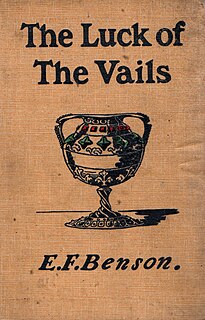
The Luck of the Vails is a 1901 mystery crime novel by the British writer E.F. Benson, later better known as the author of the Mapp and Lucia series. It was one of only two ventures he made into the genre during his prolific career along with The Blotting Book (1908). In his autobiography Benson numbered it as one of only four of his novels he was satisfied with.
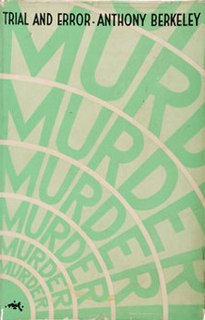
Trial and Error is a 1937 mystery detective novel by the British writer Anthony Berkeley. It was a loose sequel to the 1929 novel The Piccadilly Murder, featuring two of the characters from the earlier work the unprepossessing but shrewd Ambrose Chitterwick and Chief Inspector Moresby of Scotland Yard. Berkeley was a prominent author of the Golden Age of Detective Fiction, known for his inverted detective stories.
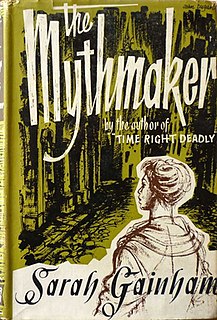
The Mythmaker is a 1957 spy thriller novel by the British writer Sarah Gainham, her third published novel. At with many of her works it takes place in Vienna, where she settled in the post-war era. It was released in the United States in 1958 under the alternative title Appointment in Vienna.

Not to Be Taken is a 1938 mystery detective novel by the British writer Anthony Berkeley. It was one of several stand-alone novels he wrote alongside his series featuring the private detective Roger Sheringham. It was written when the Golden Age of Detective Fiction was at its height. It was published in the United States with the alternative title A Puzzle in Poison.
Lynn Brock (1877-1943) was the pseudonym of the Irish writer Alister McAllister, who moved to England and wrote a series of mystery novels. Brock is best known for his series of Colonel Gore detective novels, which enjoyed popularity in the 1920s and 1930s during the Golden Age of Detective Fiction. His novels employ a complexity of style and are generally set in rural locations. He also wrote several plays under the name Anthony Wharton.
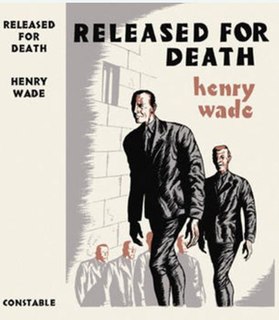
Released for Death is a 1938 crime thriller novel by the British writer Henry Wade. Wade was a writer of the Golden Age of Detective Fiction, best known for his series featuring Inspector Poole. This was one of a number of stand-alone novels he wrote. It has elements of an inverted detective story, rather than the traditional closed circle of suspects.

Part for a Poisoner is a 1948 detective novel by E.C.R. Lorac, the pen name of the British writer Edith Caroline Rivett. It is the thirty first in her long-running series featuring Chief Inspector MacDonald of Scotland Yard, one of the more conventional detectives of the Golden Age of Detective Fiction who relies on standard police procedure to solve his cases.. It was published in the United States by Doubleday under the alternative title of Place for a Poisoner.
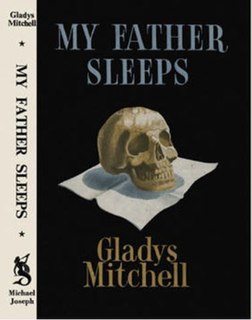
My Father Sleeps is a 1944 mystery detective novel by the British writer Gladys Mitchell. It is the seventeenth in her long-running series featuring the psychoanalyst and amateur detective Mrs Bradley. It is set in the Western Highlands of Scotland.

Inspector French's Greatest Case is a 1924 mystery detective novel by Freeman Wills Crofts. It in his series of novels featuring Inspector French, a Scotland Yard detective of the Golden Age known for his methodical technique. Like much of the following series the plot mixes the traditional form of the puzzle mystery with that of a police procedural. French has to carefully study railway and shipping timetables and crack a cipher in order to solve his case.


















